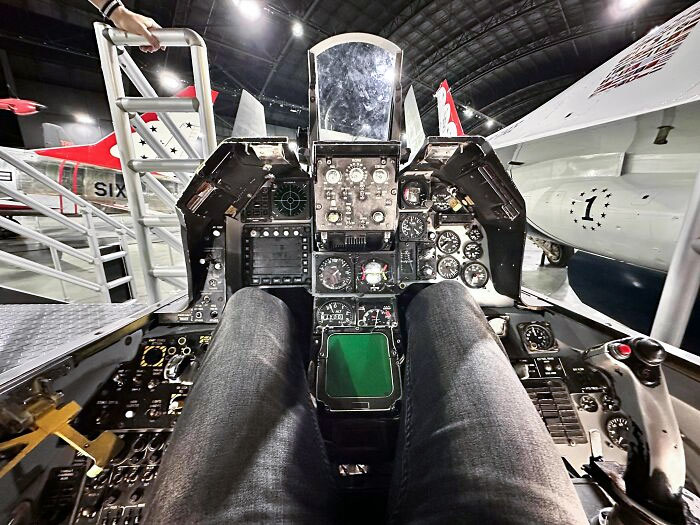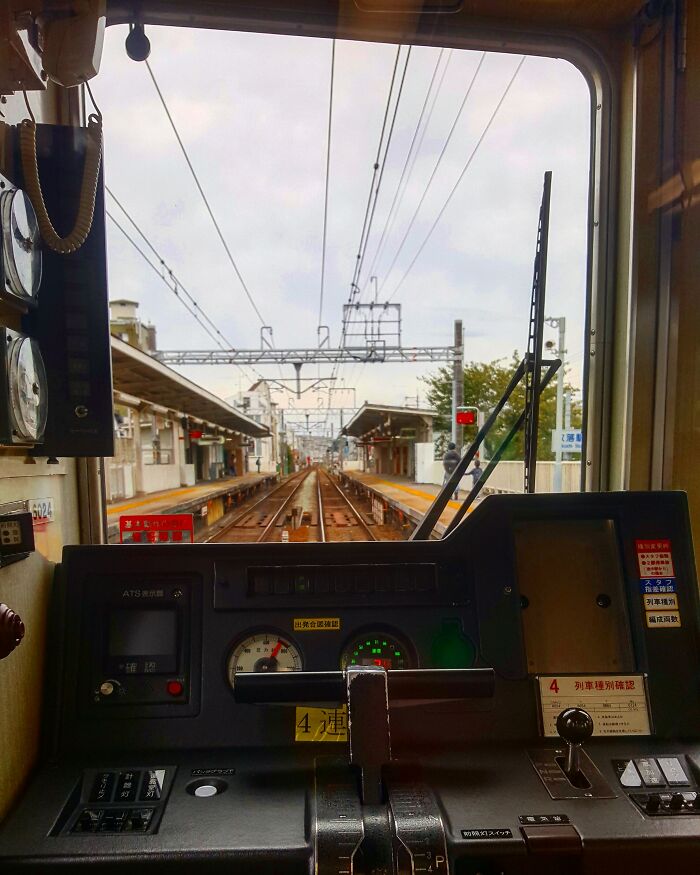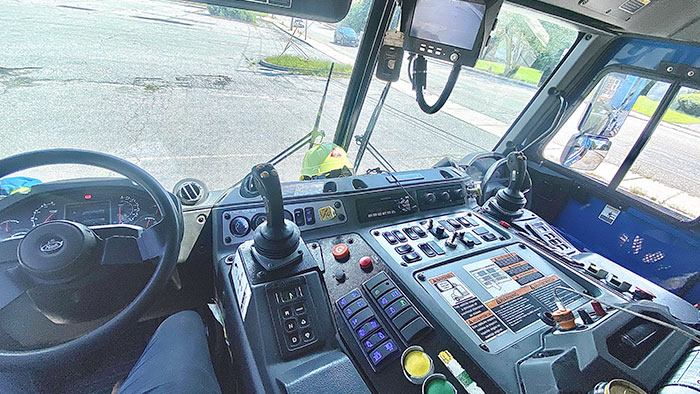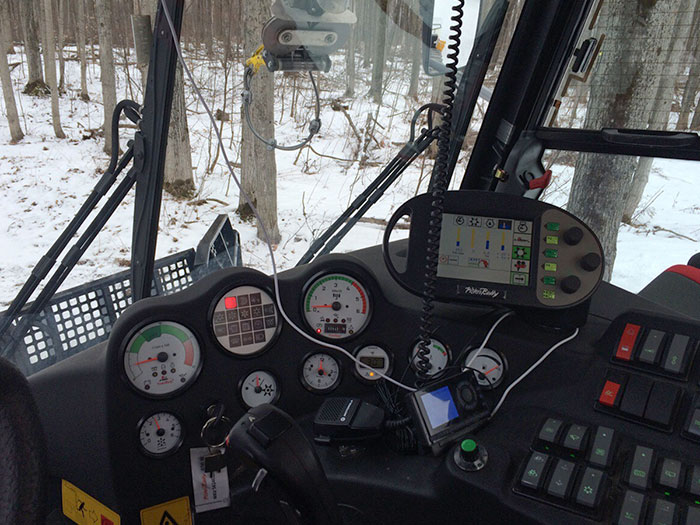I’m sure that you know your car's interior like the back of your hand. Chances are, you have already memorized what handle to turn to put on the heating or which button to push to change the radio station without taking your eyes off the road. However, some automotive cabins possess far more features that push the boundaries of technology, comfort, and design. Some of them start resembling spaceships, which most of us have probably only seen in the most realistic sci-fi movies.
But for some professionals, operating such vehicles is as usual as scrambling eggs in the morning. Fortunately for us, they gladly share their unique workplaces with others, allowing us to take a curious peek inside. Today, Bored Panda is presenting you with a whole list of the most interesting cabins inside vehicles that you wouldn’t want to miss an opportunity to see. Each photo really makes you wonder, ”Do they really know what every button does?”
This post may include affiliate links.
Here's The Inside Of A Narrow Gauge Steam Train For Those Who Are Interested
It May Be A Bit Complicated To Get To My Workstation, But The Commute Is Worth Every Ounce Of Effort
The Cab Of A 1920 Streetcar
Probably the most impressive cabins on this list are aircraft cockpits, full of instruments and controls that allow pilots to navigate and operate the vehicle safely.
This area is designed for the pilot and co-pilot to keep essential controls within easy reach, ensuring that they can quickly react to any situation that arises. Every button, switch, or lever has a purpose, and only those who master them are fit to fly.
Shuttle Endeavour's Cockpit Before All Systems Are Shut Down An It Becomes A Museum Piece
The Cab Of My Tractor
Cab Of A Modern Trash Truck
Its two main functions are to provide the pilot with a good angle and to make control mechanisms as accessible to them as possible. The section operates like an office where aviators receive all the data via screens.
Fortunately, the most crucial elements of the cockpit are usually similar from one aircraft to another. Even if a pilot has never flown with, for example, a Boeing 777, they could still identify the most basic control functions and swiftly get the hang of the plane.
So How About The Engine Room Of An Actual Steamship?
Here's The Shot Of My Cab, The C-5M Super Galaxy While Aerial Refueling With A KC-135
Inside The Cab Of An Ice 3 High-Speed Train
that's in Germany, y'all. Unfortunately it often enough doesn't deliver in terms of punctuality or reliance.
We’re going to discuss a few of the basics that can be found in an aircraft’s cockpit control panels, starting with the ignition control systems. This essentially is a key for starting a car. In bigger aircraft, instead of a key, there are a variety of switches that start the gas turbine engine.
The steering wheel in such vehicles is called a yoke. Just like a traditional one, it allows the pilot to move the aircraft up and down, left and right. Conventionally, they’re shaped in a W or a U. A smaller aircraft can have a side stick instead of a yoke, which is lighter and is usually located on the floor of the cockpit.
I Asked To Take A Photo Of The Flight Deck Of The 787-9. The Captain Said, "No, I Have A Better Idea". The Excitement Of Sitting In The Captain's Seat Never Fades
Thank heavens. For a second I thought I must be getting so old to think that this pilot looks about 15....
Fast Attack Submarine Cab
He's A Picture Of My Cab. Just Sailing Along
The vehicle’s power is controlled by what is called a throttle. It’s the equivalent of a gas pedal in the car and is either a push-pull device or a leveler. The pilot can add or take away power by adjusting the amount of fuel and air mixture via the throttle. Next to it usually are “controllable” and “mixture” that also help to regulate fuel intake while flying.
From The Cab Of An Amish Buggy
The View From My Cab. Not A Vehicle But An Airport Control Tower Cab
Inside The Operator Cab Of A 240 Ft Tower Crane
Another interesting device located in the cockpit is an anemometer. It measures the vehicle speed relative to air, which is important for maintaining control during the flight. Turn coordinator, for example, helps the pilot make calculated turns, which ensures stability and efficiency mid-air. Of course, aircrafts are also supplemented with various GPS and radio systems that help to navigate and communicate in the sky.
Any Museum That Has Cabins You Can Sit In Gets An Automatic 10/10. I Was Super Surprised By Just How Laid Back The F-16 Was. My Knees Were On My Chest
Here Is My Cab En Route To A Glacier Landing (MD520)
Here's Mine
Thankfully, the larger part of steering is taken care of by autopilot. Humans are usually primarily responsible for takeoff and landing and might make any corrections if necessary, like in cases of bad weather. The program calculates the optimal altitude and speed using data such as weight, fuel quantity, destination, and takeoff. All of this information is entered into the system before the flight.
Inside Operator Cab. 1945 Dravo Barge-Mounted Crane
This looks like it was pulled off duty after extensive use in a forest fire. Or maybe as a post apocalyptic movie prop.
Peek Inside A Supermarket Flower Delivery Truck
Here Is A Chick's View From An Anchored Tug And Barge In NY Harbor
Safety is ensured in every detail of the cockpit, and glass is no exception. It’s approximately 2.5 inches thick and strengthened with various chemicals. The glass contains several layers and can withstand temperatures from -76 degrees to 104 degrees Fahrenheit. In very extreme situations, it can crack but the fracture only happens in the first layer. Normally, the glass doesn’t break under typical conditions.
My Workstation Can Get A Little Lonely, But I Wouldn't Trade It For The World (F-16)
This Is The Cab Of My Modern Locomotive
Not Quite The Cab, But The Inside Of Our Fixed-Wing Medevac Plane During A Routine Repatriation Flight Of A Neonate. A Beechcraft King Air 200
The cockpit doors are also meticulously protected with a security system that allows the pilots to access them only with a password. In case of attack, they are made to withstand gunfire and small explosives. They also lock themselves from the inside to prevent any intrusion for the rest of the flight. Pilots need to follow strict emergency procedures and are in constant training that provides them with the necessary skills to handle unexpected events and ensure safety.
Here's The View From The Engineer's Chair Of A 50-Year-Old Swiss Cog Train That Climbs Up And Down Pike's Peak Every Day. I Miss You, Number 16
Office Space, AH-64D Apache Edition
Inside My Flying Workplace - Old An-2 Airplane
The Inside Of An Amphicar. Rubber Duckies Essential
The Inside Of The TV Truck I'm Working In Tonight
Inside Of A C-17. Peep The Centrally-Mounted Joystick. Only Boeings Have This Sort Of Design
So I Thought I Would Post My UK Bus Cab
The Forward Console On The Vessel I Work On
Inside Cab, Halter Marine Built Crane. 130 Ton Capacity, Cab Is 82’ Above The Deck
Saw The Garbage Truck And Fire Truck. Maybe Your Inner Kid Wanted To Be A Sailor. Here's A Picture Inside A Coast Guard Ship Engine Room
The Inside Of A Different Kind Of Emergency Response Vehicle
A Nice View
Here's One From An Old And Small Bulk Carrier
Saw The Other Cool Peeks Inside Childhood Dream Jobs And Wanted To Add The Wheelhouse Of My Tug Boat To The Collection
So How About This Metro Cab?
For Those Interested - Generation V'Locity Cab. Or In My Case "The Office"
My son sitting in the 1938 stock London Underground train cab. The London Transport museum brings it out for a couple of weekends every September 1938Stock-...cab31b.jpg 
So nice seeing proper buttons on so many of these instead of just a touchscreen.
My son sitting in the 1938 stock London Underground train cab. The London Transport museum brings it out for a couple of weekends every September 1938Stock-...cab31b.jpg 
So nice seeing proper buttons on so many of these instead of just a touchscreen.

 Dark Mode
Dark Mode 

 No fees, cancel anytime
No fees, cancel anytime 





















































































































